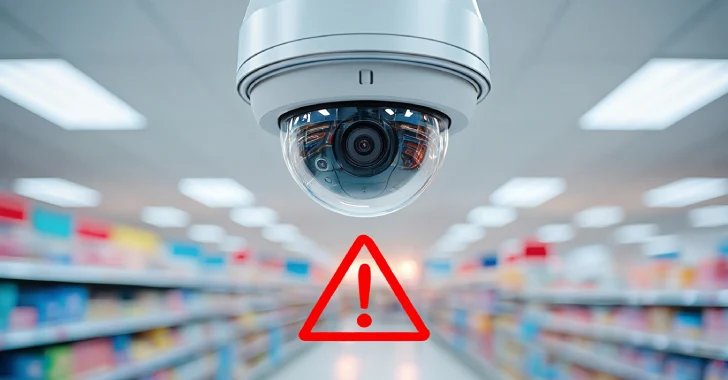Quick Takeaways
-
Vulnerability Overview: Critical security flaws (CVE-2025-31700 and CVE-2025-31701) in Dahua smart cameras allow unauthenticated attackers to remotely execute commands, potentially hijacking devices used for video surveillance.
-
Affected Devices: Flaws impact multiple Dahua camera models (IPC-1XXX, IPC-2XXX, IPC-WX, etc.) with firmware built before April 16, 2025, making it crucial for users to check their device’s build timestamp.
-
Exploitation Risks: The vulnerabilities are buffer overflow issues that enable attacks through malicious packets, leading to denial-of-service or remote code execution, especially concerning for devices exposed to the internet.
- Security Measures: While some devices have protection mechanisms like ASLR, they still face risks of DoS attacks; successful exploitation grants attackers root access, complicating remediation efforts.
Underlying Problem
On July 30, 2025, cybersecurity researchers unveiled critical vulnerabilities in the firmware of various Dahua smart cameras, which, if not promptly mitigated, could enable malicious actors to seize control of these devices. Reported by Bitdefender and disseminated via The Hacker News, the flaws—designated as CVE-2025-31700 and CVE-2025-31701, with CVSS scores of 8.1—pertain to the ONVIF protocol and file upload handlers, allowing unauthenticated attackers to execute arbitrary commands remotely. This grave security lapse impacts specific camera series, particularly those built before April 16, 2025, which are commonly utilized in retail and residential surveillance setups.
The vulnerabilities are rooted in buffer overflow weaknesses, where attackers can exploit the ONVIF request handler and the RPC file uploader by sending tailored malicious packets. While some devices may have incorporated protective measures like Address Space Layout Randomization (ASLR), vulnerabilities to denial-of-service attacks still loom large. Dahua’s warning highlights the heightened risk for devices exposed to the internet, as successful exploitations grant attackers root access without user interaction, complicating any potential remediation efforts.
Potential Risks
The recently disclosed vulnerabilities in Dahua smart cameras pose a significant risk not only to the devices themselves but also to the broader ecosystem of businesses, users, and organizations relying on these surveillance systems. With critical flaws in the firmware enabling unauthenticated remote code execution, attackers can seize control of affected cameras, leading to potential data breaches, unauthorized surveillance, and systemic disruptions in environments such as retail stores, casinos, and residential areas. The cascading effects of such breaches can erode consumer trust, expose sensitive data, and incur hefty financial penalties for organizations lacking adequate cybersecurity measures. Furthermore, as these devices often operate within interconnected networks, the exploitation of a single vulnerability has the capacity to compromise multiple systems, amplifying the overall risk landscape for all stakeholders involved. Hence, the imperative for immediate patching and robust security protocols cannot be overstated; the repercussions of inaction extend beyond individual devices, threatening the integrity of entire operational frameworks.
Possible Action Plan
Timely remediation of critical vulnerabilities is crucial in safeguarding system integrity and preventing unauthorized access, particularly in the context of ‘Critical Dahua Camera Flaws Enable Remote Hijack via ONVIF and File Upload Exploits’.
Mitigation Steps
- Update Firmware: Regularly install the latest firmware from Dahua to patch known vulnerabilities.
- Change Default Credentials: Replace factory-set usernames and passwords to strengthen authentication.
- Restrict Network Access: Limit device access to trusted IP addresses to minimize exposure.
- Implement Firewalls: Utilize firewalls to monitor and control incoming and outgoing network traffic.
- Monitor Logs: Regularly review access logs for suspicious activities that may indicate exploitation attempts.
- Conduct Security Audits: Periodically assess camera configurations and operational security measures.
NIST CSF Guidance
NIST’s Cybersecurity Framework emphasizes the need for risk management strategies to protect assets against vulnerabilities like the aforementioned camera flaws. Refer to NIST SP 800-53 for comprehensive guidelines on security controls and best practices applicable to this situation.
Explore More Security Insights
Explore career growth and education via Careers & Learning, or dive into Compliance essentials.
Explore engineering-led approaches to digital security at IEEE Cybersecurity.
Disclaimer: The information provided may not always be accurate or up to date. Please do your own research, as the cybersecurity landscape evolves rapidly. Intended for secondary references purposes only.
Cyberattacks-V1

